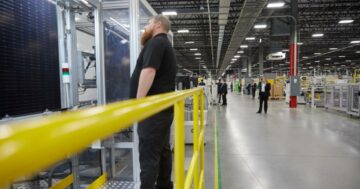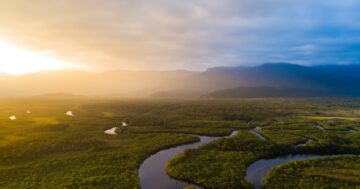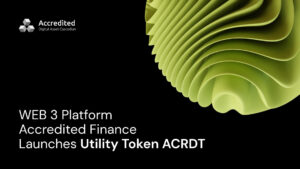
When serious storms hit cities, low-income neighborhoods are more likely to see heavier damage and less funds for recovery than wealthier areas. During extreme heat waves, rural farm workers working in the fields face long hours in treacherous conditions, with few protections under the law. And sea level rise on the shores of small, resource-scarce island nations leaves residents with the impossible choice of paying for expensive adaptation or moving.
The impacts of climate change have disproportionately affected those who reside in poorer communities, who are more likely to be people of color in the U.S., and especially the children and elderly in those communities.
Last week at GreenBiz’s annual climate-tech conference, VERGE 21, business leaders, climate activists and tech entrepreneurs discussed how to effectively implement climate solutions to help such communities affected by climate change’s “first and worst.” Technological, policy and nature-based solutions to climate change already exist, and more are being created every day. The question is how to effectively put them in action.
The best answer, according to those in these frontline communities and those who have started various climate projects, is honest, transparent trust-building with community members involved in actually implementing solutions and long-term investments in members of the community.
The strength of community buy-in for new projects
In one VERGE session focusing on climate tech, Julia Kumari Drapkin, CEO and founder of participatory science platform ISeeChange, discussed how traditional approaches to climate solutions engaging with vulnerable low-income communities have let down those they meant to serve.
“Top-down, well-intentioned solutions failed to keep pace with local means,” she said.
Drapkin’s ISeeChange is a digital tool that instead enables citizens to report the impacts of climate change around them, then works with policymakers and solutions providers to address these issues on the ground. On the mobile app, citizens can report observations of the natural world around them, from temperatures to rainfall to frost to flowers and bugs. Small talk anecdotes such as “It’s never this cold in April” or “The rhododendron never bloom this time of year,” when collected and connected together, become cold hard data that shows the effects of a changing climate.
ISeeChange’s data also serves as evidence of how communities that have been disinvested in for years often face worse impacts, and their concerns are often overlooked. “One-fifth of new public projects are cancelled due to social and environmental concerns of local communities,” she pointed out.
Top-down,well-intentioned solutions failed to keep pace with local means.
“Most of our clients have critical trust issues,” she added. For generations, outsiders have come into their communities promising to solve problems, but rarely ask what community members need, instead believing they know better themselves. Sometimes, they make the problems worse, leaving a legacy of “multigenerational toxic narratives.” Building — or rebuilding — trust is crucial for the success of projects.
The Rev. Michael Malcom, founder and executive director of The People’s Justice Council and Alabama Interfaith Power and Light, agreed. His work centers on intersectional environmental justice, and in his observed experience, those coming to low-income communities often have a “throw the [brick] over the wall” approach to providing climate technology, he said. However, they ignore factors like who will undertake the work of implementing and maintaining.
For example, companies come to Malcom’s town in rural Alabama, hoping to install solar panels, one of the most mature forms of cleantech — but without community buy-in, they won’t be installed, used and provide any energy savings or climate benefits, he explained.
Instead, Malcom issued “a call to care for communities and a call to cooperate with communities.”
Indeed, indigenous Mexican-Chilean climate activist Xiye Bastida spoke of a similar situation when she addressed the VERGE 21 audience. As she called for an intersectional lens on the climate crisis, she described how Mexico City University tried to build a new campus on land near an indigenous community. While the indigenous community told the officials that the land was unstable, the university went ahead with the project anyway — but was unable to finish it, because the ground was dangerous and the building started sinking, just as the community predicted.
“The people who have lived on the land for thousands of years know it best,” she said, urging policymakers and entrepreneurs to meaningfully listen to them.
Beyond new climate projects, invest in community members
For Suzanne Singer, Navajo (Diné) tribe member and co-founder of the nonprofit Native Renewables, working on clean energy projects and fostering education with tribal members go hand-in-hand.
Native Renewables helps tribal communities to grow technical renewable energy capacity and affordable access to off-grid power, working towards its overall mission of empowering Native American families with energy independence.
In her conversation at VERGE 21, she pointed out how Native American communities are notoriously underfunded. “I think some things that are unknown are how many families need infrastructure, electricity, roads, access to clean water, even running water.”
“We know the community we work in and the culture — in some cases we know the language, because many don’t speak English,” she added, referencing her company.
She urges policymakers and entrepreneurs hoping to work to start “thinking more creatively about what communities want beyond just the project itself.”
Native Renewables, for example, not only helps build solar projects and microgrids, but also offers opportunities for community members to learn about energy, get trained in building or maintenance and more. Singer said that it’s about “trying to invest in our own people through workforce and trainings.”
These approaches will require companies to rethink how they currently deploy climate technology and clean energy projects. Our response to the fundamental challenge of climate change must provide access and opportunity where we have previously failed, ensure the health and well-being of everyone and work to end inequitable patterns and practices that have brought us to this unsustainable point.








